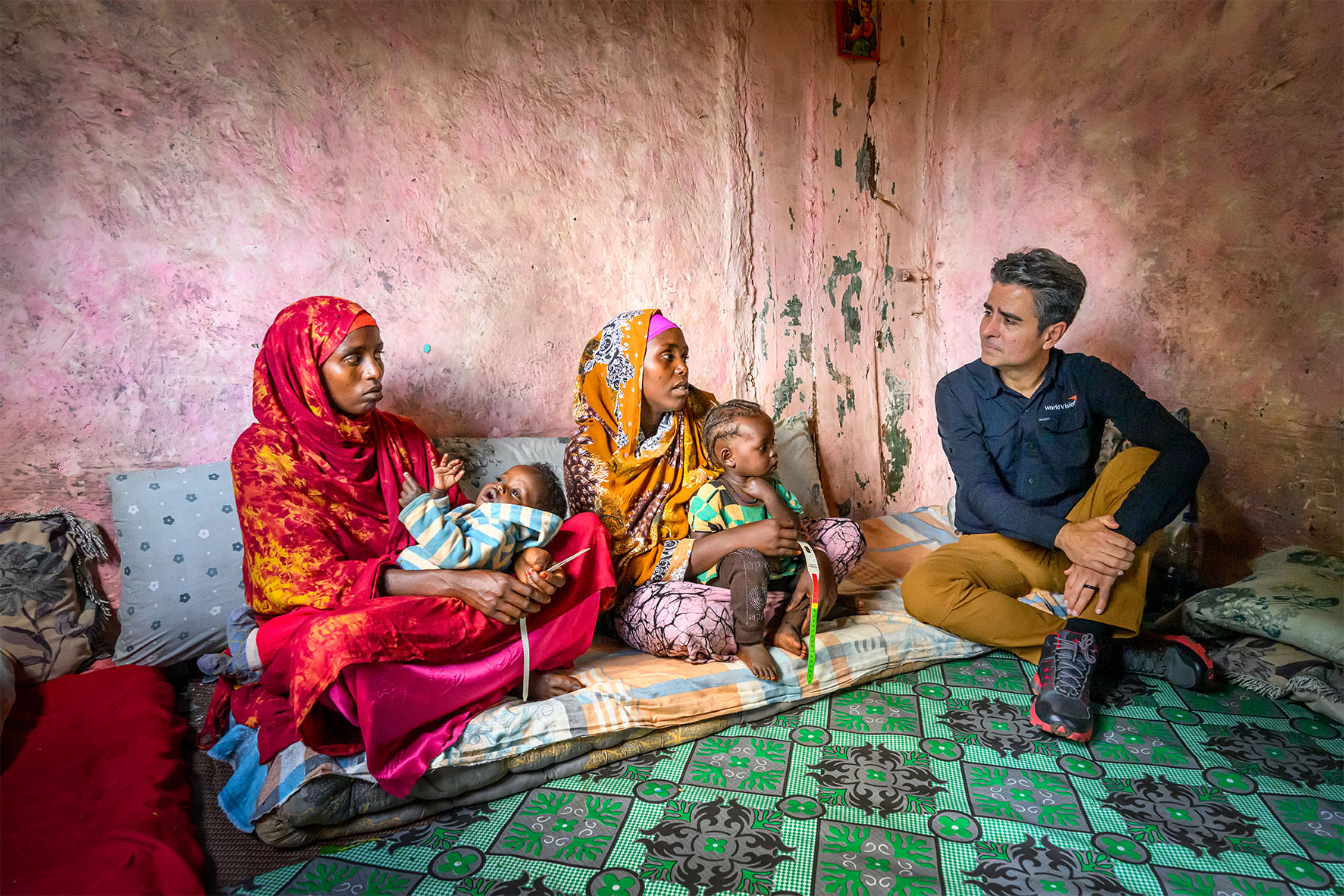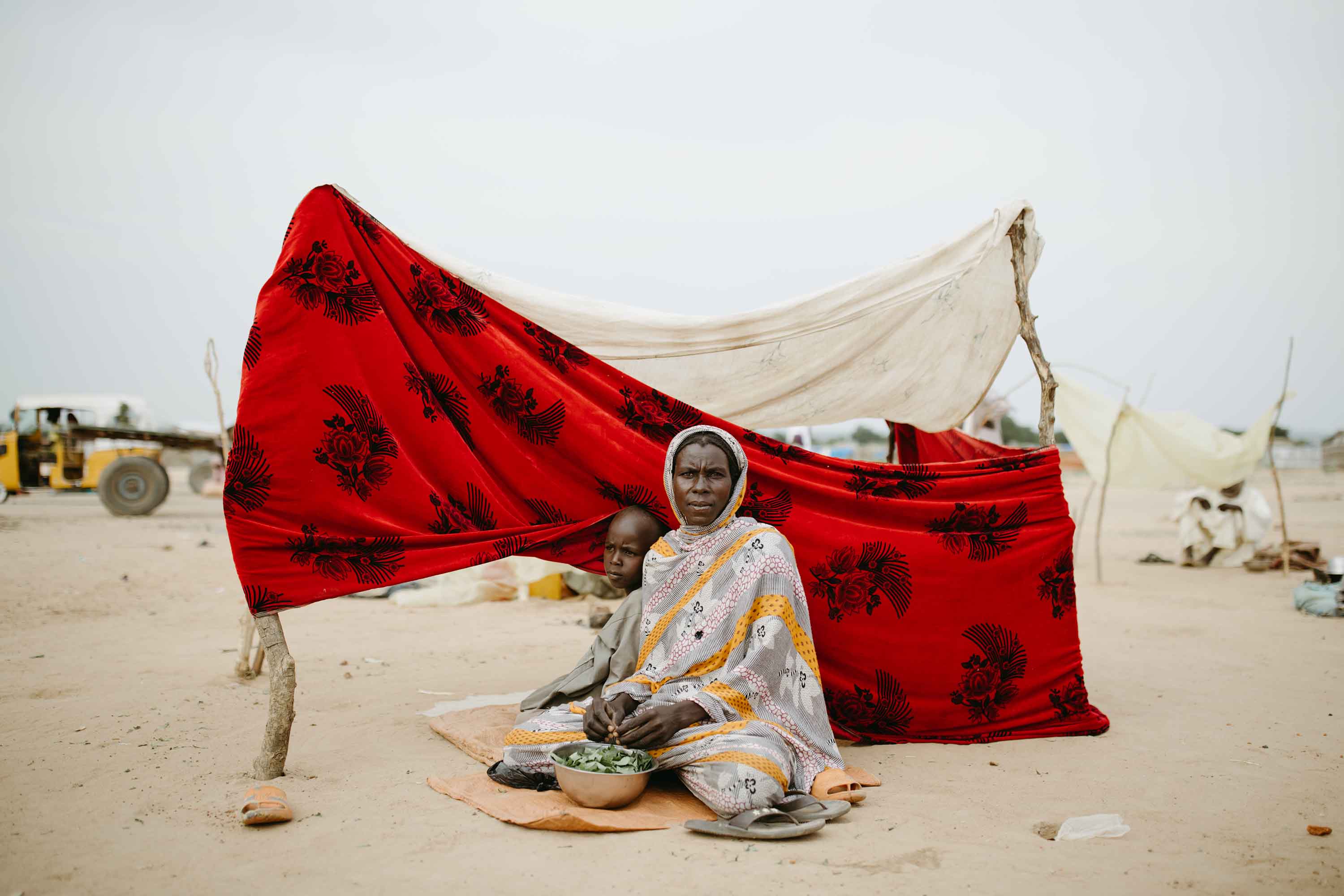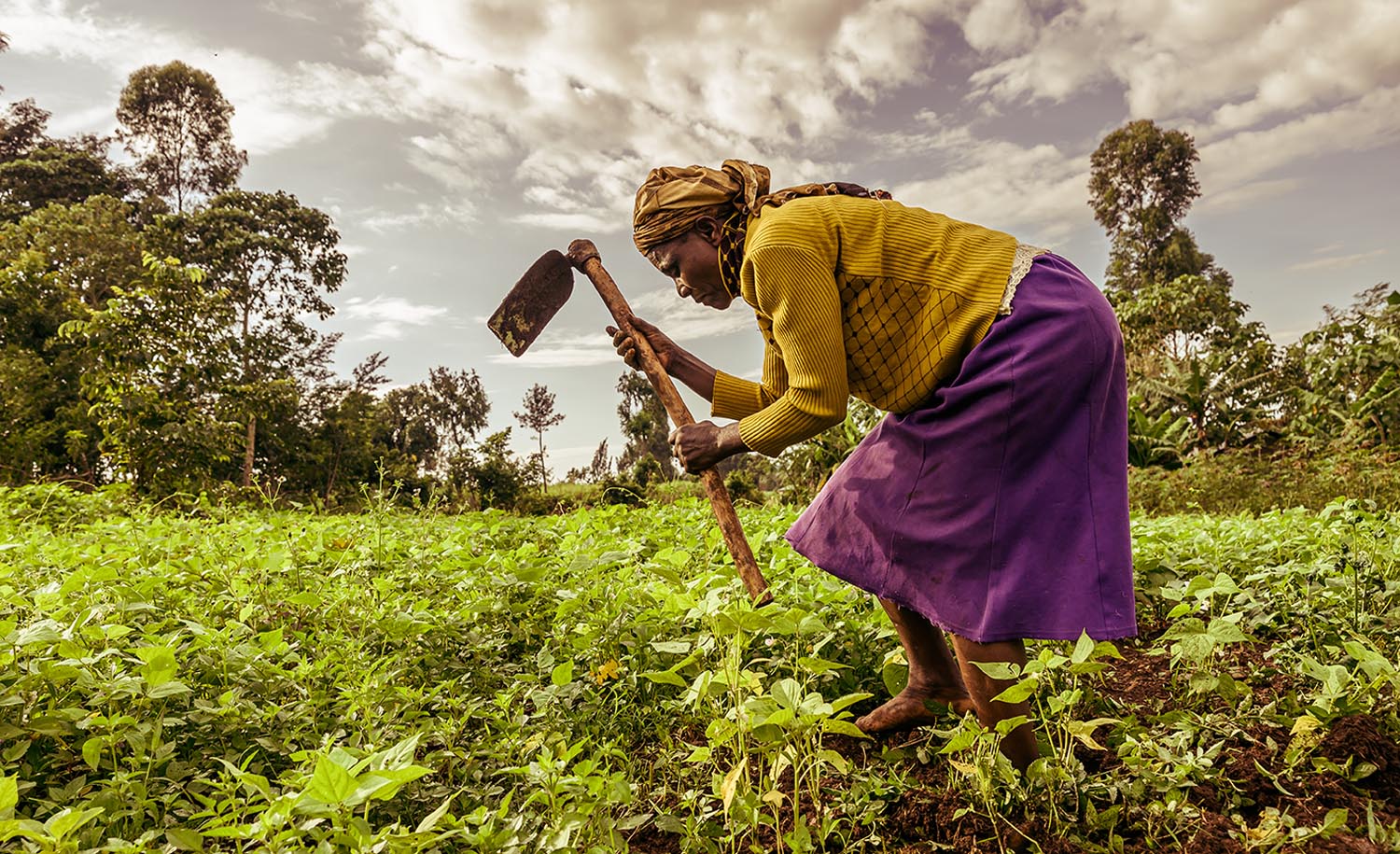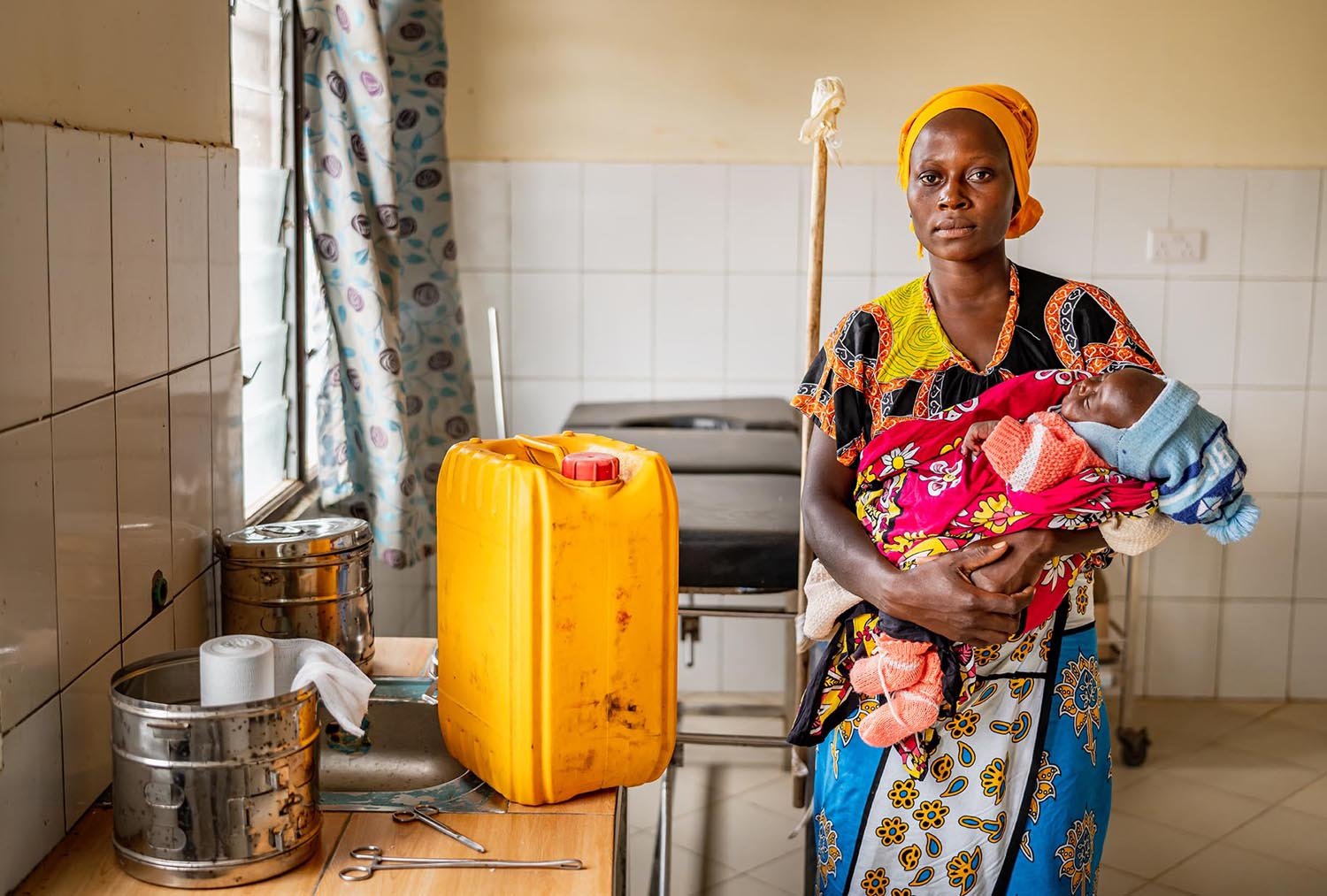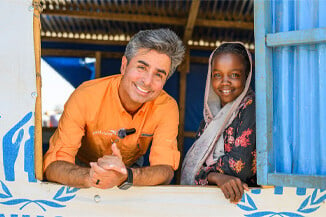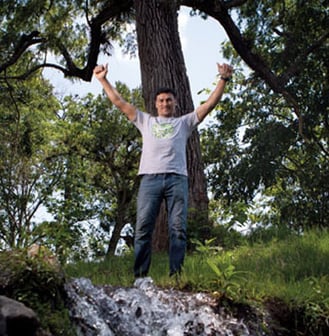 A THRIVE farmer puts ecosystem restoration into action
A THRIVE farmer puts ecosystem restoration into action
“I always say when you want, you can,” Genrri Herrera Ramirez says. This determined streak has put him on a journey of restoration — ecosystem restoration in his home village, that is. Describing his Honduran coffee-farming community 25 years ago, he says, "We needed water, but not just water. We needed water suitable for human consumption. We needed to protect our community. It was a huge mess of contamination, and we couldn't pass this down to our future generations.”
Since 1974, the United Nations has recognized June 5 as World Environment Day, and this year, it marks the launch of the U.N.’s ambitious Decade on Ecosystem Restoration. We are thrilled to announce that World Vision is an official supporting partner of this initiative — one that’s inextricably linked with global poverty alleviation. From 2021 to 2030, the U.N. and partners like World Vision will lead “a global drive to halt the degradation of land and oceans, protect biodiversity, and rebuild ecosystems.”
Restoring an ecosystem sounds technical and intimidating. What does it mean in action? And how does it affect people like the ones World Vision works with? Let’s hear from Genrri, a THRIVE model farmer who’s seen the importance of ecosystem management and restoration firsthand — not just for his coffee farm and cooperative, but for his family, neighbors, and entire region.
The problem
Genrri’s story starts in the mid-1990s, when his town, San Marcos, began growing too fast to keep up with the area’s existing infrastructure. When the community decided to use the nearby Río Hondo as their water source, leaders quickly realized the need to protect the river from surrounding farming contaminants. Though the town bought a piece of land, and some protective measures were taken initially, it wasn’t enough. Fires and unrestrained logging exacerbated widespread deforestation, and the community just couldn’t get enough clean water for their increasing needs.
At that time, the river’s flow was weak and its water unclean. Genrri explains, “There was no diversification in crops. People only planted coffee and … many times water arrived contaminated because the cattle passed through the micro-basin or [there was] contamination from the waste of coffee [processing]. Before, when tests were carried out in the Río Hondo, the water flow only reached 240 gallons per minute, which was very little for communities that were growing so much in population.”
Then, Genrri and other coffee producers called a meeting. They’d realized another vital layer of the water problem: Their own coffee waste was going into the river and polluting the water they needed for their coffee production.
“It was a disaster!” Genrri says. “A change was necessary, because we were destroying our community.”
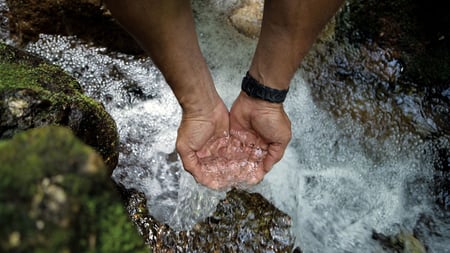
The Solution
In 2008, Genrri and his wife, Marisol, expanded their coffee cooperative from not only selling the coffee the members grew but also to processing the coffee cherries into salable beans (a water-intensive process). While this was done initially to get better quality beans, with this shift, he says, “we needed the water from the Río Hondo, so we got in completely because we thought, ‘Well, we are getting milk from the cow; we have to feed it.’”
The initial protected area San Marcos bought for the watershed around 1998 was 1 acre. When abundant clean water was still scarce a decade later, Genrri and the other farmers knew a bigger commitment was needed. “We made the decision to buy a piece of land in order to reforest it,” Genrri says. “We didn’t do it for money. We didn’t do it for the cooperatives. We did it to reduce water pollution.”
While they put up fences around the watershed to keep loggers and cattle out, farmers like Genrri also committed to stop using chemicals in their coffee production. “Now we have the entire area protected, including land purchased by the municipality, by the cooperative, by the San Marcos Ecological Association and other institutions, although there are still some private areas. We have a total of 11.3 acres of protected, lush forest.”
And the watershed? In Genrri’s words, the change “is something extraordinary, something that is priceless.”
Watch Genrri explain what's happened
The transformation
Today, the Río Hondo watershed gushes out almost 3,000 gallons of crystal-clear water each minute — more than 12 times its initial output!
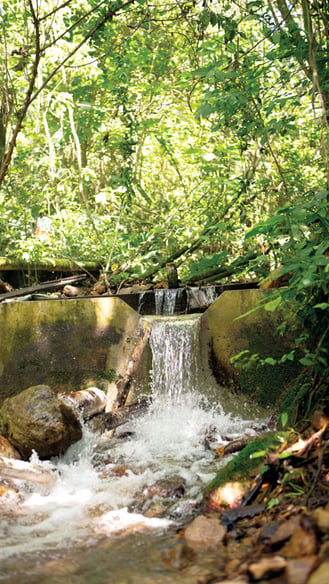
Genrri is as surprised as the next person about the massive change. “The increase of the water flow — we never! I mean, we never imagined that the water would increase so much. We never planned to go from 240 to almost 3,000 gallons. Imagine that! This is daily and per minute. That is a big surprise. It makes me think that what we’re doing is worth it.”
Not a surprise to Genrri? That the reforestation faced obstacles. One of his biggest challenges was changing people’s behavior. “We’ve achieved changes by involving people in different trainings about environment protection; here we have received the support of World Vision. I think that by our example we’ve made people see the changes that occur if we try. People who knew that area 20 years ago know that it was a desert, full of farms, a complete mess. Now anyone who goes to that mountain can see its beauty from every point of view.”
“Before,” he adds, “you didn’t see deer and now you can see them. You can also see ocelots, agoutis, coyotes, different types of birds, among others. Recently a biologist came to do an internship and discovered a species of frog that is supposedly only here.”
And that determined streak of Genrri’s? It pushes him and his partners toward relentless care for the sources of their livelihoods and futures. “We have reduced water pollution from [coffee processing] in the community and here in the area we have reduced [pollution from coffee] by almost 90%,” he says. Their whole operation is organic, which has opened up better sales options for their beans. And in the mountains where the coffee plants grow and the Río Hondo flows, “There are [still] parts that are deforested, so what we want to see is if we can unite that corridor, unite all those mountains and focus on the deforested areas.
“There is commitment, and that is why the results are so clear!”
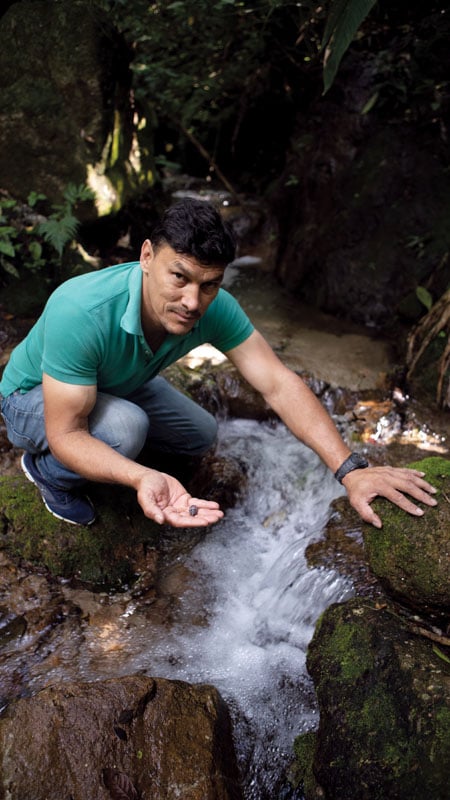
The results
Restoring this landscape has proved a holistic endeavor for the community. Along with plentiful clean water for San Marcos citizens and the coffee producers, “Now we can sow other things,” Genrri says. “We produce bananas, avocados, lemons, and cassava among other things. In fact, in the food area, if before we were at 2% of our potential, now we have elevated our production to 25%.”
But coffee — and the environment — remain the focus. “On the subject of coffee, we are seeing the results of organic production. We are more interested in quality than quantity. We are more interested in what we are doing to the planet because we understand that the lands that we have around us must be cared for. If everyone took care of their [part], the world would be more reforested.”
Their commitment to the land is making waves throughout the coffee community, especially in Honduras. “Many producers have come to know what we have been doing to take care of the environment. People have come here from Guatemala; people from almost all over Honduras have come to see this experience.”
The future
Genrri’s story touches on two global crises — rural extreme poverty and lack of clean water. And he shows us how holistic the solution to both of those can be by taking simple, environment-focused steps.
Genrri exemplifies the purpose of the U.N.’s Decade on Ecosystem Restoration: empowering people who are committed to their homes, farms, communities, and their children’s futures with the knowledge and resources to not only stop and reverse environmental degradation, but also to wipe out poverty. Genrri just happens to be a little more self-taught than the average farmer. “In fact,” he says, “I have been an environmentalist since I was little. Once I almost fought with schoolmates because they stoned a nest of little birds and I asked them why they did that. Would they like to be stoned at their house or to have stones thrown at them? So, I say, nobody likes to be bothered. I am going to treat people and nature the way I want them to treat me.”
Join World Vision, the U.N., and Genrri in fighting for #GenerationRestoration. When we want, we can.

